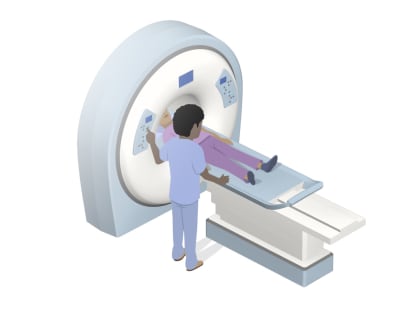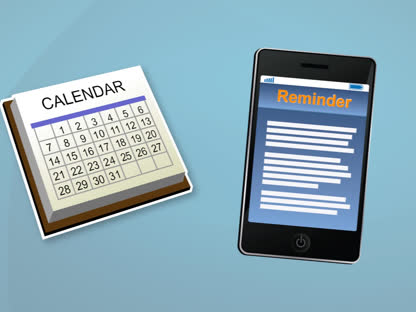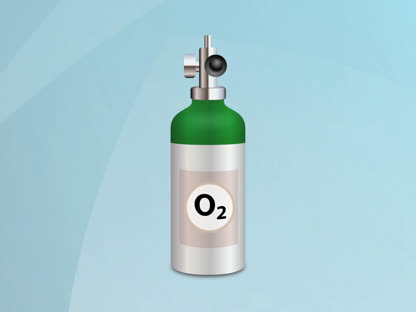This is a HealthLine Online content page created by Healthwise. HealthLine Online helps you make better decisions about your health.
COPD (Chronic Obstructive Pulmonary Disease)
Condition Basics
What is chronic obstructive pulmonary disease (COPD)?
COPD (chronic obstructive pulmonary disease) is a lung disease that makes it hard to breathe because air doesn't flow easily in and out of your lungs.
Chronic bronchitis and emphysema are two lung problems that are types of COPD.
- Chronic bronchitis. When you have chronic bronchitis, the airways that carry air to the lungs (bronchial tubes) get inflamed and make a lot of mucus. This can narrow or block the airways, making it hard for you to breathe. It can also make you cough.
- Emphysema. With this disease, the tiny air sacs in the lungs are damaged and lose their stretch. Less air gets in and out of the lungs, which makes you feel short of breath.
COPD gets worse over time. You can't undo the damage to your lungs. But you can take steps to prevent more damage and to feel better.
What causes it?
COPD is almost always caused by smoking. In some cases, COPD may be caused by a rare gene change that affects the body's ability to protect the lungs from damage.
What are the symptoms?
When you have COPD, you have a cough that won't go away, and you're often short of breath. You may also cough up mucus. At times, your symptoms may suddenly flare up and get much worse.
How is it diagnosed?
To find out if you have COPD, your doctor will do a physical exam, ask questions about your health, and may do blood tests. Your doctor may do a chest X-ray to look at your lungs and have you do breathing tests to find out how well your lungs work.
How is COPD treated?
COPD may be treated with medicines and oxygen to help you breathe easier. Treatment also includes things you can do for yourself. These are things like quitting smoking, eating well, getting vaccines, and staying active. And avoid colds, infections, and other things that may trigger your symptoms.
Health Tools
Health Tools help you make wise health decisions or take action to improve your health.
Cause
COPD is almost always caused by smoking. Most people with COPD have smoked for a long time. And research shows that smoking cigarettes puts you at risk for COPD. Over time, breathing tobacco smoke irritates the airways and damages the lungs.
People who get emphysema in their 30s or 40s may have a disorder that runs in families, called alpha-1 antitrypsin deficiency. This is a rare condition in which your body may not be able to make enough of a protein (alpha-1 antitrypsin) that helps protect the lungs from damage.
Learn more
What Increases Your Risk
Things that put you at risk for COPD include:
- Tobacco smoking.
- Tobacco smoking is the most important risk factor for COPD. The risk for COPD increases with both the amount of tobacco you smoke each day and the number of years you have smoked.
- Asthma.
- Asthma and COPD are different diseases, even though both of them involve breathing problems. People with asthma may have a greater risk for getting COPD. The reasons for this are not fully understood.
- Breathing in things that can irritate your lungs.
- These things include chemical fumes, industrial dust, air pollution, and second-hand smoke over a long period of time.
Prevention
The best way to keep COPD from starting is to not smoke. And if you smoke, the best way to prevent COPD from getting worse is to quit smoking. There are clear benefits to quitting, even after years of smoking. When you stop smoking, you slow down the damage to your lungs.
Learn more
Watch
- COPD: Take This Chance to Quit Smoking

- COPD: Time to Decide About Smoking
- Quitting Smoking: The Rewards Start Now

Symptoms
The main symptoms are:
- A cough that will not go away.
- Mucus that comes up when you cough.
- Shortness of breath that gets worse with activity.
At times, your symptoms may suddenly flare up and get much worse. This is a called a COPD exacerbation (say "egg-ZASS-er-BAY-shun"). When this happens, your usual symptoms quickly get worse and stay bad. This can be dangerous. You may have to go to the hospital.
Symptoms of a COPD flare-up
In a COPD attack or flare-up, your usual symptoms suddenly get worse. You have more shortness of breath and wheezing. You have more coughing, with or without mucus. You may cough up more mucus than usual, and it may be a different colour.
What Happens
COPD gradually gets worse over time. As it gets worse, you may be short of breath even when you do things like get dressed, fix a meal, or eat. People often feel weaker and limit activities. And some people may get lung infections and heart problems.
Shortness of breath gets worse as COPD gets worse.
- Early in the disease, before you have a lot of lung damage, you may not have much trouble breathing, even when you are active.
- Later in the disease, you may have already lost much of your lung function.
- If you are active, you may be short of breath during activities that didn't used to cause this problem.
- If you aren't very active, you may not notice how much shortness of breath you have until your COPD gets worse.
- When you've had COPD for many years, you may be short of breath even when you are at rest. Even simple activities may cause very bad shortness of breath.
If you smoke, quitting can slow the rate at which breathing gets more difficult. You can't undo the damage to your lungs. But you may be able to postpone or avoid more serious problems with breathing.
Problems from COPD
COPD can lead to other health problems. Some of these include:
- More frequent lung infections, such as pneumonia.
- A higher risk of thin or brittle bones (osteoporosis) and broken bones, especially if you use oral corticosteroids often.
- Problems with weight. Some people may need to lose weight, but others may need to gain weight.
- Heart failure or an irregular heartbeat.
- A collapsed lung (pneumothorax). COPD can damage the lung's structure and allow air to leak into the chest cavity.
- Sleep problems because you aren't getting enough oxygen into your lungs.
- Feelings of anxiety or depression.
Learn more
Watch
When to Call a Doctor
Call 911 or other emergency services now if:
- Breathing stops.
- Moderate to severe difficulty breathing occurs. This means a person may have trouble talking in full sentences or breathing during activity.
- Severe chest pain occurs, or chest pain is quickly getting worse.
- You cough up large amounts of bright red blood.
Call your doctor immediately or go to the emergency room if you have been diagnosed with COPD and you:
- Cough up a moderate amount of blood (more than a few tablespoons).
- Have shortness of breath or wheezing that is quickly getting worse.
- Start having new chest pain.
- Are coughing more deeply or more often, especially if you notice an increase in mucus (sputum) or a change in the colour of the mucus you cough up.
- Have increased swelling in your legs or belly.
- Have a high fever.
- Develop flu-like symptoms.
If your symptoms (cough, mucus, and/or shortness of breath) suddenly get worse and stay worse, you may be having a COPD flare-up, or exacerbation. Quick treatment for a flare-up may help keep you out of the hospital.
Call your doctor soon for an appointment if:
- Your medicine is not working as well as it had been.
- Your symptoms are slowly getting worse, and you have not seen a doctor recently.
- You have a cold and:
- Your fever lasts longer than 2 to 3 days.
- Breathlessness occurs or becomes noticeably worse.
- Your cough gets worse.
- You have not been diagnosed with COPD but are having symptoms. A history of smoking (even in the past) greatly increases the likelihood that symptoms are from COPD.
- You cough up any amount of blood.
- You feel sad, anxious, or hopeless for more than a few days.
Talk to your doctor
If you have been diagnosed with COPD, talk with your doctor at your next regular appointment about:
- Help to stop smoking.
- A yearly influenza (flu) vaccine.
- The pneumococcal and whooping cough (pertussis) vaccines.
- An exercise program or pulmonary rehabilitation.
- Any updates of your medicines or treatment that you may need.
Exams and Tests
To find out if you have COPD, your doctor may:
- Do a physical exam and listen to your lungs.
- Ask you questions about your past health and whether you smoke or have been exposed to other things that can irritate your lungs.
- Have you do breathing tests, including spirometry, to find out how well your lungs work. These tests measure the amount of air in your lungs and the speed at which air moves in and out.
- Do a chest X-ray to look at your lungs.
- Do a one-time test for Alpha-1 antitrypsin (AAT). AAT is a protein your body makes that helps protect the lungs. People who have a low AAT are more likely to get emphysema.
- Do other tests to help rule out other problems that could be causing your symptoms, such as lung cancer.
Your doctor may order other tests, as needed. These may include:
- Arterial blood gas test.
- This test measures how much oxygen, carbon dioxide, and acid is in your blood.
- Oximetry.
- This test measures the oxygen saturation in your blood.
- Electrocardiogram (ECG, EKG) or echocardiogram.
- These tests may find certain heart problems that can cause shortness of breath.
- Transfer factor for carbon monoxide.
- This test looks at whether your lungs have been damaged, and if so, how much damage there is and how bad your COPD might be.
- CT scan.
- This gives doctors a detailed picture of the lungs.
Learn more
Watch
Treatment Overview
COPD may be treated with medicines and oxygen, along with self-care.
Medicines
Medicines used to treat COPD include:
- Bronchodilators.
- There are different types of medicines used to open or relax your airways. They can help you breathe easier.
- Short-acting bronchodilators ease your symptoms. They are considered a good first choice for treating stable COPD in a person whose symptoms come and go.
- Long-acting bronchodilators help prevent breathing problems. They help people whose symptoms do not go away.
- Phosphodiesterase-4 (PDE4) inhibitors.
- These are taken every day to help prevent COPD flare-ups.
- Corticosteroids.
- These reduce airway inflammation. They help prevent and treat COPD flare-ups.
- Other medicines.
- These include methylxanthines, antibiotics, and others.
Oxygen therapy
Oxygen therapy boosts the amount of oxygen in your blood and helps you breathe easier. It can help people with very bad COPD and low oxygen levels live longer.
Self-care
There are things you can do for yourself to help manage your COPD. These include:
- Not smoking.
- Eating well.
- Staying active.
- Learning breathing methods to help you become less short of breath.
- Avoiding colds, infections, and other things that may trigger your symptoms.
- Staying current on vaccines.
A pulmonary rehab program can help you learn to manage your disease. A team of health professionals can provide counselling and teach you how to breathe easier, exercise, and eat well.
Treating a COPD flare-up
Treatment of a COPD flare-up, or attack, depends on how bad the flare-up is. Mild flare-ups may be treated by following your doctor's instructions for using a quick-relief (short-acting) inhaler or oral steroid medicines. More severe flare-ups may involve visits to your doctor's office or clinic. Or you may need to be treated in the hospital. Treatments include:
- Quick-relief inhaled bronchodilators. These medicines relax the bronchial tubes and make it easier to breathe.
- Oral steroid medicines. They reduce the swelling in your airways.
- A machine to help you breathe better or to breathe for you. These are called ventilation machines.
- Oxygen, to increase the amount of oxygen in your blood.
Treatment may also include:
- Intravenous (I.V.) fluids to treat dehydration.
- Other bronchodilators.
- Antibiotics. Your doctor may prescribe antibiotics to help treat a bacterial infection.
Learn more
Watch
Self-Care
You can't undo the damage to your lungs from COPD. But you can take steps to prevent more damage and to feel better.
Quit smoking
This is the most important thing you can do to slow down the disease and improve your quality of life.
You may think that nothing can help you quit. But there are several treatments shown to be very good at helping people stop smoking. Talk to your doctor if you need help quitting.
Avoid things that can irritate your lungs
These things include smoke and air pollution.
Find ways to make breathing easier
Here are some ways you can make breathing easier.
- Conserve your energy. You may get more tasks done and feel better if you learn to save energy while doing chores and other activities. For instance, take rest breaks and sit down whenever you can while you fold laundry, cook, and do other household tasks. An occupational therapist or physiotherapist can help you find ways to do everyday activities with less effort.
- Learn breath-training methods—such as breathing through pursed lips—to improve airflow in and out of your lungs. Learn ways to clear your lungs that can help you save energy and oxygen.
- Discuss pulmonary rehabilitation with your doctor.
- Take the medicines prescribed by your doctor. If you use inhalers, be sure you know how to use each of them properly.
Stay as active as you can
Try to do activities and exercises that build muscle strength and help your heart. If you get out of breath, wait until your breathing is back to normal before you keep going.
Eat well
Getting enough to eat will help you keep up your strength. If you are losing weight, ask your doctor or dietitian about ways to make it easier to get the calories you need.
Avoid COVID-19, colds, and influenza (flu)
Wash your hands often. Get a flu vaccine every year. Stay up to date on your COVID-19 vaccines. And ask your doctor about getting the pneumococcal and whooping cough (pertussis) shots.
Seek education and support
Treating more than the disease and its symptoms is very important. Here are some things that can help you cope and live better with COPD.
- Educate yourself and your family about COPD and your treatment program. This helps you and your family cope with your lung disease.
- Counselling and support groups can help you learn to live with COPD. You may feel socially isolated because you can't enjoy activities with your family and friends the way you used to. But many people with COPD can lead a full life.
- Ask for help from family, friends, and health professionals. Learning that you have a disease that may shorten or change your life may lead to depression or anxiety. These can make your COPD symptoms worse. But support can make it easier.
- Try to follow your treatment plan. It may make you feel better and less likely to become depressed. A self-reward system—such as a movie night after staying on your medicine and exercise schedule for a week—can help keep you motivated.
Learn more
Watch
- Avoiding COPD Triggers

- COPD: Eating Well for Strength and Energy
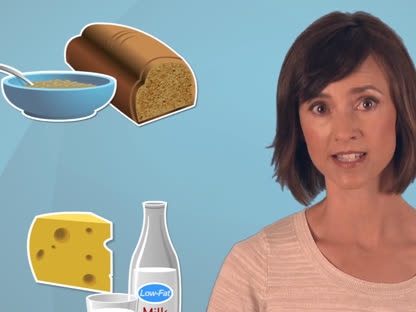
- COPD: Exercises for Building Strength
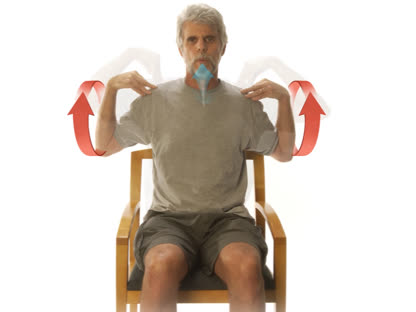
- COPD: How to Use a Nebulizer
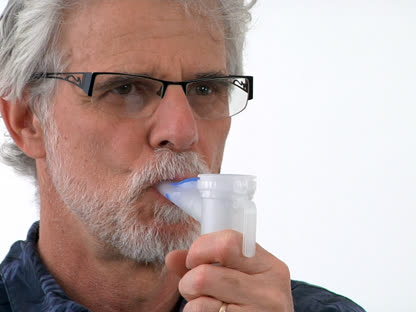
- COPD: Keeping Your Quality of Life

- COPD: Take This Chance to Quit Smoking

- COPD: Time to Decide About Smoking
- COPD: You Can Still Be Active

- How to Use an Incentive Spirometer
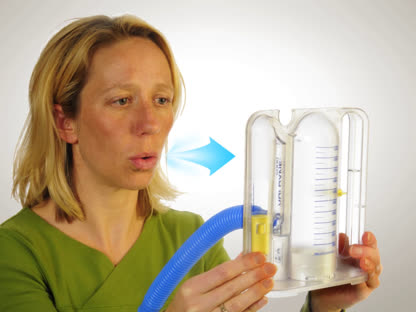
- Lung Problems: Breathing Exercises
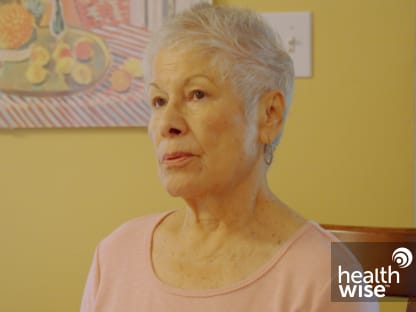
- Lung Problems: Ways to Clear Mucus
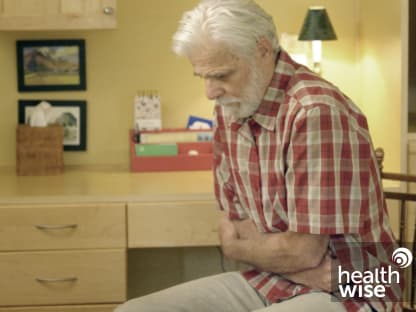
- Quitting Smoking: The Rewards Start Now

- Using a Dry Powder Inhaler
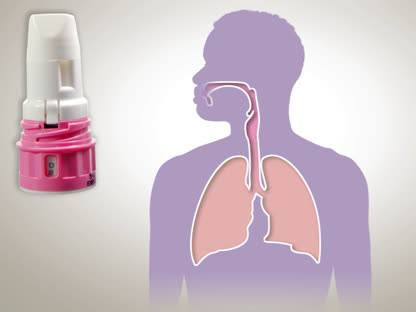
- Using an Inhaler and Spacer
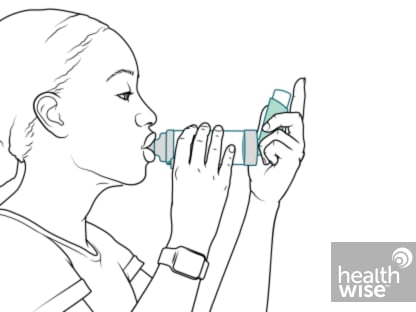
- Your Corticosteroid Inhaler: Making It Easier to Breathe
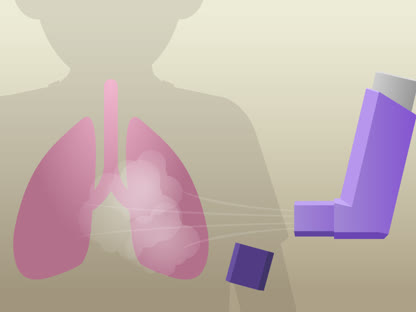
Surgery
Lung surgery is rarely used to treat COPD. Surgery is never the first treatment choice and is only considered for people who have severe COPD that has not improved with other treatment.
Surgery choices include:
- Lung volume reduction surgery.
This removes part of one or both lungs. It makes room for the rest of the lung to work better. It is used only for some types of severe emphysema.
- Lung transplant.
This surgery replaces a sick lung with a healthy lung from a person who has just died.
- Bullectomy.
This removes the part of the lung that has been damaged by the formation of large, air-filled sacs called bullae. This surgery is rarely done.
Other procedures:
- Bronchoscopic interventions.
These non-surgical techniques collapse (or close off) diseased parts of the lungs to help the remaining parts work better.
Learn more
Credits
Current as of: July 31, 2024
Author: Ignite Healthwise, LLC Staff
Clinical Review Board
All Healthwise education is reviewed by a team that includes physicians, nurses, advanced practitioners, registered dieticians, and other healthcare professionals.
Current as of: July 31, 2024
Author: Ignite Healthwise, LLC Staff
Clinical Review Board
All Healthwise education is reviewed by a team that includes physicians, nurses, advanced practitioners, registered dieticians, and other healthcare professionals.
 Chronic bronchitis
Chronic bronchitis Airways Inside the Lungs
Airways Inside the Lungs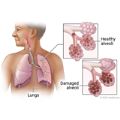 Emphysema
Emphysema X-Ray of a Normal Chest
X-Ray of a Normal Chest Lung Transplant
Lung Transplant Avoiding COPD Triggers
Avoiding COPD Triggers Chronic obstructive pulmonary disease (COPD): Fast Facts
Chronic obstructive pulmonary disease (COPD): Fast Facts COPD: Keeping Your Quality of Life
COPD: Keeping Your Quality of Life COPD: Take This Chance to Quit Smoking
COPD: Take This Chance to Quit Smoking COPD: What Happens to Your Lungs
COPD: What Happens to Your Lungs COPD: You Can Still Be Active
COPD: You Can Still Be Active
This information does not replace the advice of a doctor. Ignite Healthwise, LLC, disclaims any warranty or liability for your use of this information. Your use of this information means that you agree to the Terms of Use. Learn how we develop our content.



